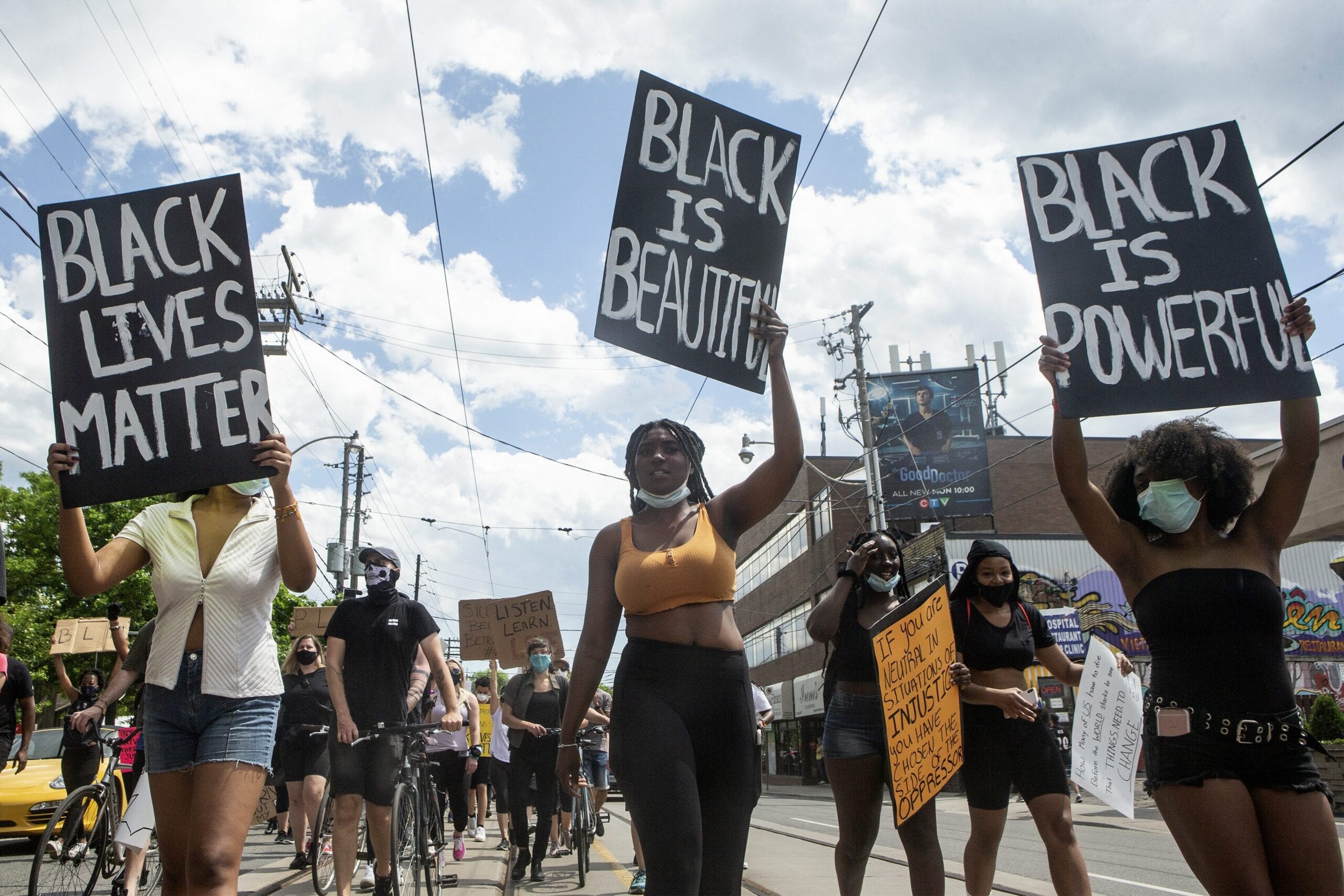We’re currently in the middle of a global uprising. In Canada, organizers and protesters are demanding justice against anti-Black racism from the Yukon to New Brunswick. As national conversations about defunding and abolishing the police evolve, we are forced to reimagine what community safety can look like for us all. These protests have demonstrated what Black communities already know: We can and will keep each other safe.
The harrowing reality is Black people are facing two public health crises simultaneously: the ongoing COVID-19 pandemic and more than 400 years of anti-Black racism. The former was once labelled “the great equalizer,” a public crisis that supposedly affected us all in equal measure—and yet it never has. We saw the urgency in public response when basketball players, the prime minister’s wife and seemingly richer white people contracted the virus. And though much was unknown during the early days of this pandemic, it has become clear that the virus disproportionately affects Black people. In the U.K., studies indicate long-standing disparities in wealth and living arrangements contribute to the fact that Black people in England and Wales are twice as likely to die from COVID-19 as their white counterparts. While this data is from overseas, we can expect the same impact on Black people in Canada. Some early reports reflect this: Experts told Global News, for instance, that Black neighbourhoods in Toronto have been hit hardest by COVID-19, while research into rates of mortality in the U.S. by race and ethnicity have found that Black Americans are dying from the virus at three times the rate of white people.
The COVID-19 pandemic is an indicator of the much larger death sentence Black people continue to face. With the world on pause, we watched George Floyd, a 46-year-old father of five, scream “I can’t breathe” 16 times, read about how 26-year-old D’Andre Campbell was in distress when he called for the police and how the family of 29-year-old Regis Korchinski-Paquet was home while she had an interaction with the police. It’s worth noting that Floyd had contracted COVID-19 prior to his death. His senseless murder is the perfect example of how susceptible Black people are to dying by state-sanctioned violence than they are due to a pandemic.
This uprising has included national demands, creative disruptions and robust health and safety measures. And as protesters take to the streets, Black and Indigenous organizers are ensuring the care and safety of those demonstrating.
In Whitehorse, three mutual aid grassroots groups offered peer-to-peer emotional support to those in need in the days following their rallies and marches, free of cost.
In Ottawa, volunteer emergency responders and CPR-trained individuals arrived on-site in case of medical or mental health emergencies during rallies in the city. Local mosques donated more than 1,000 masks for demonstrators. “We completely relied on our community and they showed up in all ways,” says Vanessa Dorimain, organizer of Ottawa’s March for Black Lives event.
“These protests have demonstrated what Black communities already know: We can and will keep each other safe”
In Toronto, a volunteer initiative called the Bike Brigade, which began as a mutual aid effort to provide food and supplies to those affected by COVID-19, formed a bike barrier that allowed protesters to stage a six-hour sit-in for Not Another Black Life’s Juneteenth demonstration. Outside of Toronto Police headquarters, organizers chalked Xs on the ground to encourage social distancing.
In Fredericton, New Brunswick, organizer Husoni Raymond says Black communities came together to ensure the safety of one another during a demonstration following Floyd’s murder. “Our communities have always taken care of each other and provided to others what they didn’t have.” Raymond adds that the protest was organized in less than 24 hours. “And in that time, coalition partners stayed up to sew masks to ensure we [could] distribute to those who didn’t have any,” Raymond says.
As this revolution continues, we don’t have to recreate new ideas surrounding safety; we can draw inspiration from the ways past and current organizers and community members have been practising collective care:
- Wear masks.
- Bring hand sanitizer.
- Wear eye protection to combat against tear gas tactics used by the police.
- Don’t wear contact lenses.
- If possible, minimize yelling to avoid spread of droplets; use signage and noisemakers to express your emotions.
- Come and leave with a small group.
- Have volunteers distribute hand sanitizers and masks to those without.
- Use a large open space that encourages physical distancing.
- Avoid attending if you feel ill.
- Partner with testing centres to prioritize rally participants.
- Finally, if you can, try to self isolate for two weeks after possible exposure.
This is a moment of global resistance. Marginalized communities are pushing back and demanding change that will ensure community safety. Even in crisis conditions, we have kept—and will always keep—each other safe.


 Why you can trust Xtra
Why you can trust Xtra


